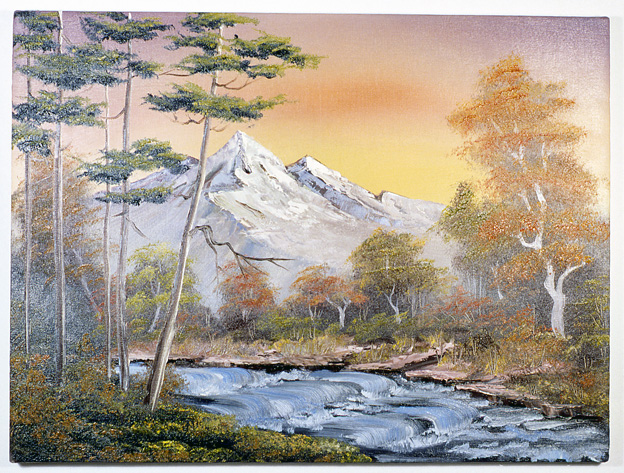Ull Hohn
13 February–29 March 2009

In 1980, twenty-year-old Ull Hohn (1960 – 1995) moved from a small town in North-Rhine Westphalia to West Berlin to study painting at the University of the Arts. At this time the Neue Wilden were dominating West German painting with their neo-expressionism, parallel to similar developments in Italy, France, Britain, and beyond. Not interested in angry, masculine painting, Hohn rejected the broad brushstrokes and wild gestures of the Neue Wilden for more controlled, serial colour-configurations of ‘pure painting’. Four years later he moved to Düsseldorf to study under Gerhard Richter, who invited him to remain at the academy after graduating and join his masterclass. Yet by the autumn of 1986 he had left Germany for New York.
Hohn felt liberated in New York, far from the somewhat conservative and provincial environs of Düsseldorf. But in the rest of America, Ronald Reagan was at the height of his popularity, and even in New York the gay community was feeling the backlash of the AIDS crisis. As the epidemic spread and the outside world became even more antagonistic, the gay community in New York underwent a critical transformation, becoming more united and more politicised.
At the Whitney Independent Study Programme, which he began in 1987, Hohn started to thematise his homosexuality in his work and met his partner, Tom Burr. The New York art world, and in particular the Whitney Programme, presented Hohn with a completely new outlook. While Germany had offered less of a critical or theoretical debate about making art (where discussions about history and guilt still predominated), the American discussion had different emphases. Gender studies, issues of identity and sexuality had become key themes in academia, while the black consciousness movement and second-wave feminism had made their way into the critical discussion in art schools. This paved the way for the rise of institutional critique.
New York also offered Hohn a new view on production of art different to what he was used to in Europe, which to some extent still treated the artist as an autonomous actor. Moreover, the explosion of free-market capitalism in America in the mid-80s underpinned Hohn’s new emphasis on production and commodity culture. Manfred Hermes, who has written extensively on the artist, notes that Hohn had pushed painting to a point, where it would leave all regressive and ideological elements behind, to turn it in into a flexible and elastic medium.
At the Whitney, exposure to theory and the new principle of de-skilling led Hohn to complete two series. Untitled (9 Landscape Paintings), 1988, consists of mid-sized landscape paintings in warm tones, which recall not only Albert Bierstadt and the Hudson River School but also his former teacher Richter, whom he regarded with both respect and resistance. In 9 Relief Paintings, Hohn covered canvases in thick plaster and then coated them in opaque brown paint, creating a surface reminiscent of either chocolate or excrement. Although the two series both call into question the relevance of painting, they nevertheless exhibit a great painterly control that Hohn never fully suppressed.
By 1993, near the end of his life, Hohn had completed an ambitious series of landscapes predicated on the lessons of Bob Ross, the well-known TV painter who has since become a cult figure. Intended for the leisurely retired manager or the stressed mother, Ross taught millions of TV viewers how to paint visually pleasing landscape scenes. Yet while Hohn, himself a far more competent draughtsman than the average Ross spectator, often followed his instructions to the letter, he also added Richter-like blurs, reflections on water, and worked up surfaces put on by palette knife. Once again, Hohn sought to execute a kind of painting outside painting, but never sacrificed an engagement with the actual medium. In his short life he offered a model of aesthetic engagement that consistently investigated the dichotomy between de-skilled artistic production and painterly craftsmanship.
Text: Maximilian Mugler
















